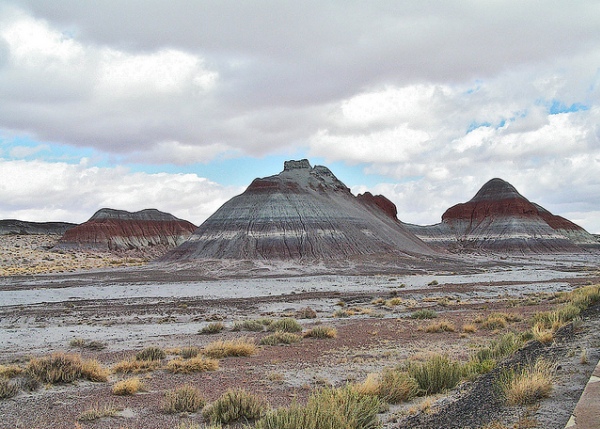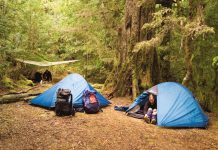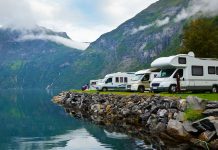When the snow covers the ground in many parts of America during the winter there are still a lot of hiking options available to enthusiasts, with one of the most popular being desert hiking. One of the most active areas for desert hiking is down in the southwest area of the country due to its warm weather and spectacular scenery.
There are plenty of exciting and fun outdoor activities that can be enjoyed is desert climates, such as hiking, camping, four wheeling, and horseback riding. However, before you head to the nearest desert to try out some of these things, you need to make sure that you’re well prepared for the harsh conditions you may find there.
 (photo credit: charlesduggar)
(photo credit: charlesduggar)
The most important thing you have to do when hiking or camping in a desert climate is to take enough water along. Even if the temperature is comfortable and moderate during the winter months you still have a need for water and to remain hydrated. The air in the desert is notoriously dry and dehydration is all too common. Make sure you have enough water and the same goes for any pets that you may be taking along.
It can get pretty cold at night in the desert. It’s imperative that you take something along that’s going to keep you warm once the temperatures fall. Even if you’re out on a short hike you need to be prepared for a sudden temperature change or if you happen to lose your way. A small flashlight or headlamp is also a good idea since many trails are quite narrow and are bordered by brush. You need to be able to see where you’re going when the sun falls.
It doesn’t matter how nice the weather is, you should take some long pants with you as well as durable hiking boots. The pants can protect your legs from the numerous cactus barbs you might encounter as well as possible snake bites and scorpion stings. Most snakes hibernate during the winter, but they can come out on warm and sunny days. Food is a given. You need to carry some nutrition with you, be it health bars, nuts or oranges. Just make sure you have something to keep your energy up just in case.
A GPS is a good idea in the desert, but if you don’t have access to one make sure you mark the trailhead and the location of your camp and car. Stay close to the trails and try not to wander off into the brush. If you’re hiking in Arizona, look out for old deserted mines that have been covered up. If you fall into one of these it’s going to be hard getting out. Many of these old mines are also popular hangouts for snakes since they’re usually moist and warm locations.
As with any adventure, you need to take a first-aid kit, a hat, sun block, sunglasses, and a cell phone. A pair of tweezers or pliers is good for pulling out small, sharp thorns. If you come across any animals be careful as rabies is a distinct possibility. If you take your dog along on a desert hike make sure he or she has up-to-date vaccines for snake bites and rabies. In addition, check the animal’s fur to make sure no small bark scorpions got into it.
The desert’s a wonderful place to spend time in, but it’s essential that you are properly prepared because it can also be a deadly place. The odds are you won’t have any problems, but there’s always a chance that something could go wrong.









